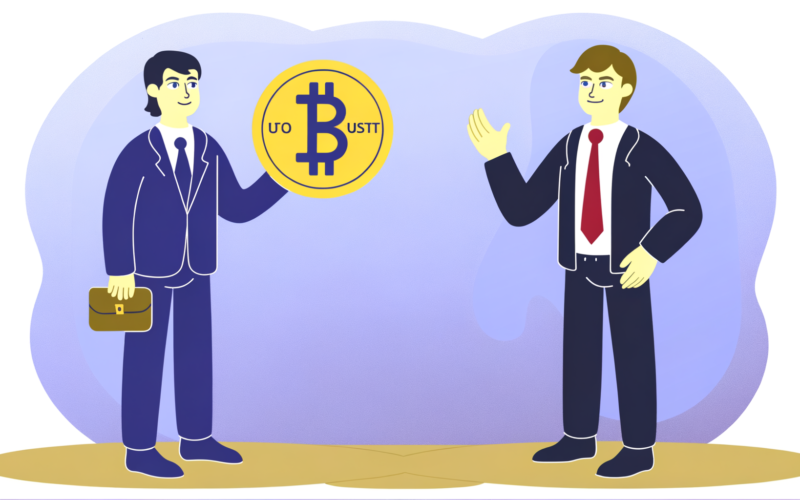Tether’s CEO: USDT to enter the U.S. market under new regulations. Circle remains confident. #Cryptocurrency #Stablecoin #GENIUSAct
- Introduction: Tether’s Strategic Move into the US Market
- The Evolution of Stablecoin Regulation in the US
- Main Insights on Tether’s USDT
- Challenges and Opportunities for Tether in the US
- Future Outlook for Tether and the Stablecoin Market
- Final Reflections on Tether’s US Market Strategy
Introduction: Tether’s Strategic Move into the US Market
In the ever-evolving world of cryptocurrencies, stablecoins have emerged as a crucial bridge between the traditional financial systems and digital assets. Among these, Tether’s USDT stands out as a dominant force. Recently, Tether’s CEO, Paolo Ardoino, announced a bold move to integrate USDT into the American financial ecosystem, catalyzed by the signing of the GENIUS Act by President Trump. This legislative change promises to reshape the landscape for stablecoin issuers, posing both challenges and opportunities for key players like Tether and its competitor, Circle. In this article, we’ll delve into the implications of this development, explore the strategies of Tether and Circle, and understand the broader impact on the stablecoin market.
The Evolution of Stablecoin Regulation in the US
The journey of stablecoins in the United States has been a complex one, marked by regulatory scrutiny and evolving legal frameworks. Initially, stablecoins operated in a regulatory gray area, with issuers navigating a patchwork of state and federal regulations. However, as the market grew and the potential of stablecoins to revolutionize finance became evident, US regulators began to take a more structured approach.
The GENIUS Act represents a significant milestone in this evolution. By imposing stringent requirements on foreign stablecoin issuers, it aims to ensure that stablecoins adhere to anti-money laundering (AML) laws and undergo rigorous audits. For companies like Tether, which issues USDT from El Salvador, this legislation presents both a challenge and an opportunity to align with US regulatory standards and expand their presence in the lucrative American market.
Main Insights on Tether’s USDT
The Strategic Importance of USDT in the US Market
Tether’s decision to bring USDT to the United States is more than just a regulatory compliance effort; it’s a strategic maneuver to tap into a vast market of consumers and businesses seeking efficient cross-border payment solutions. USDT, as a dollar-pegged token, offers stability in the volatile crypto market, making it an attractive option for remittances and international transactions.
Competing in a Compliant Landscape: Tether vs. Circle
Tether’s move also positions it against Circle, the issuer of USDC, which has long touted its regulatory compliance as a competitive advantage. Circle’s CEO, Jeremy Allaire, has emphasized the company’s commitment to transparency and adherence to legal standards, which has helped it forge partnerships with major financial institutions. As Tether steps up its compliance efforts under the GENIUS Act, the competition between these two stablecoin giants is set to intensify, with each vying for dominance in a market increasingly defined by regulatory oversight.
The Role of Audits and Transparency in Building Trust
A critical aspect of Tether’s strategy involves enhancing transparency through comprehensive audits of its reserves. Historically, Tether has faced criticism for its lack of full audits, which has fueled skepticism about its collateralization claims. By committing to rigorous audits, Tether aims to bolster trust among regulators and users alike, positioning USDT as a reliable and compliant stablecoin in the US market.
Challenges and Opportunities for Tether in the US
The GENIUS Act imposes a new regulatory paradigm for foreign stablecoin issuers like Tether. Compliance with AML laws and the completion of detailed audits are non-negotiable requirements, demanding significant resources and strategic adjustments. Failure to meet these standards could jeopardize Tether’s access to the US market, highlighting the importance of a robust compliance framework.
Capitalizing on Market Demand
Despite regulatory challenges, the demand for stablecoins in the US remains robust. With a growing number of businesses and individuals seeking efficient payment solutions, USDT has the potential to capture a significant share of this market. Tether’s dual approach—developing a US-specific stablecoin while integrating USDT under the GENIUS framework—allows it to cater to diverse client needs, from remittances to institutional transactions.
Future Outlook for Tether and the Stablecoin Market
Emerging Trends and Predictions
As Tether navigates the regulatory landscape, the broader stablecoin market is poised for significant growth. The integration of stablecoins into mainstream financial systems, driven by regulatory clarity and technological advancements, presents new opportunities for innovation and expansion. Tether’s proactive compliance efforts and strategic positioning may serve as a blueprint for other issuers looking to enter the US market.
The Role of Stablecoins in Shaping the Future of Finance
The potential of stablecoins to transform traditional financial systems cannot be overstated. By enabling seamless cross-border transactions and providing a stable digital currency option, stablecoins like USDT are reshaping how money moves globally. As regulatory frameworks mature, the adoption of stablecoins in everyday financial activities is likely to accelerate, paving the way for a more integrated and efficient global economy.
Final Reflections on Tether’s US Market Strategy
Tether’s commitment to bringing USDT to the United States under the GENIUS Act marks a pivotal moment in the evolution of stablecoins. By aligning with US regulatory standards and enhancing transparency through audits, Tether not only strengthens its market position but also contributes to the broader legitimacy and adoption of stablecoins. As the competition with Circle heats up, the focus on compliance and innovation will be crucial in determining the future landscape of the stablecoin market. For businesses and consumers alike, the increasing availability of compliant stablecoins promises greater opportunities for financial inclusion and efficiency in the digital age.











